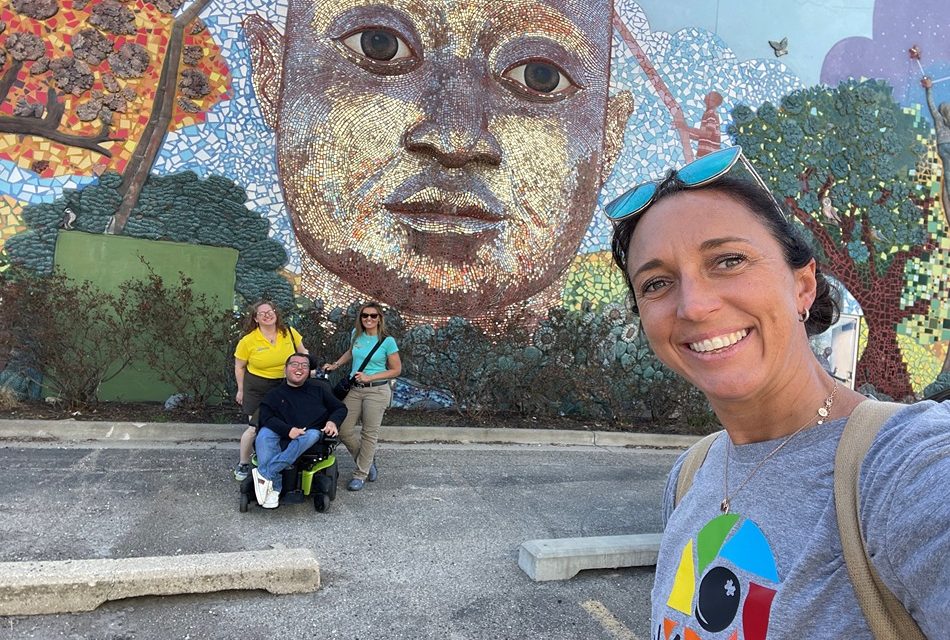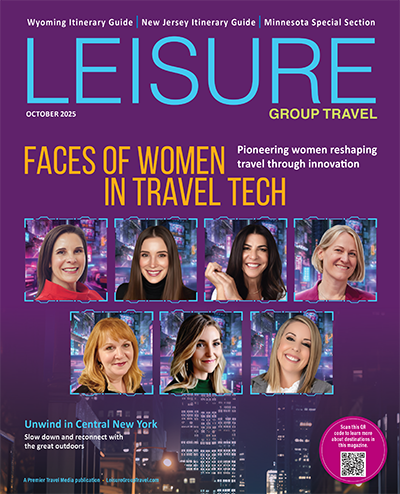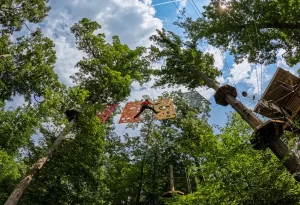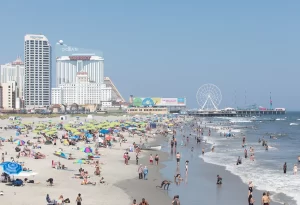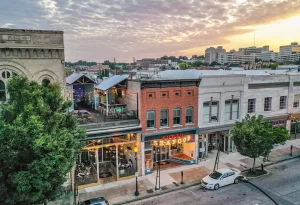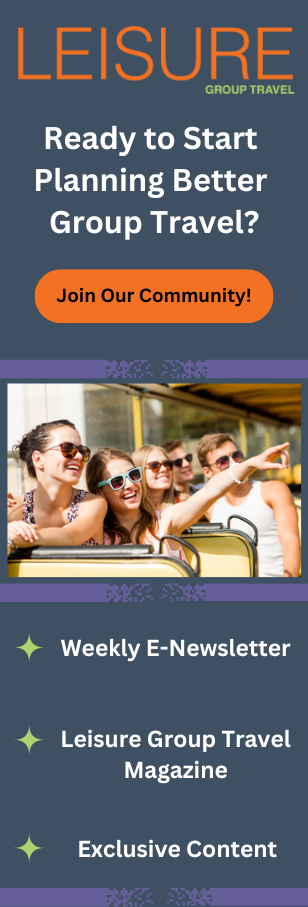Meegan Winters, Founder Able Eyes
How did you become involved in accessible tourism, and what has your journey been like?
My journey into accessible tourism began with my background as a special education teacher, working with students on the autism spectrum. I saw firsthand how the unknown often kept families from exploring the world like others. Many stayed home because they couldn’t anticipate what to expect in public spaces, making travel and outings stressful instead of enjoyable. This realization fueled my passion for creating a solution that provides accessibility information in advance, giving individuals and families the confidence to experience new places.
Beyond my professional experience, my inspiration is deeply personal. My best friend, Jessica, was a wheelchair user, and we lived together in college. Through that experience, I gained a deeper understanding of the challenges individuals with physical disabilities face when navigating unfamiliar spaces. Whether it was limited access, lack of information, or feeling excluded, I saw how simple barriers could drastically impact someone’s ability to participate fully in life.
These experiences led me to found Able Eyes and AbleVu, with the mission of making the world more accessible and inclusive through virtual tours and detailed accessibility information. My journey has been both rewarding and eye-opening, as I’ve had the opportunity to work with businesses, communities, and tourism organizations to prioritize accessibility. Knowing that our work is helping people explore with confidence while also encouraging businesses to be more inclusive makes every step of this journey worthwhile. I know Jessica would be proud of the impact we are making, and I’m excited to continue expanding accessibility in tourism so that everyone, regardless of ability, can experience the world with ease.
Looking for expert insights and fresh travel ideas? Download the latest issue of Leisure Group Travel for free and start planning your next unforgettable group adventure.
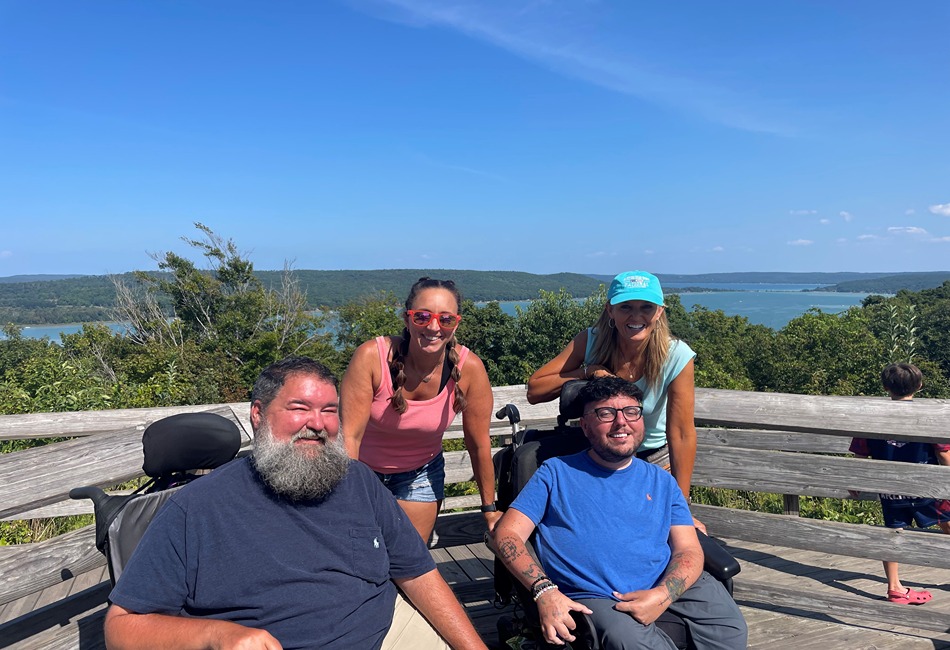
What are some common misconceptions about accessible travel, and what surprising trends or statistics should more people know?
One of the biggest misconceptions about accessible travel is that it isn’t possible—but in most cases, it absolutely is. The real challenge is that many businesses don’t know how to accommodate travelers with disabilities. They may be unaware of how their space should be set up, what accommodations they should offer, and how to communicate this information effectively to customers who need it. Accessibility isn’t just about meeting basic legal requirements—it’s about creating an inclusive experience that allows everyone to explore the world with confidence.
Another important fact that more people should know is that accessible travel is a massive and growing market. According to the CDC, 27% of U.S. adults have some form of disability, and with the aging baby boomer population, this number will only increase. In the United States alone, the U.S. Department of Labor reports that Americans with disabilities possess $175 billion in discretionary spending power. As the global population ages and the number of individuals with disabilities increases, this economic influence will continue to grow, presenting substantial opportunities for businesses that prioritize accessibility and inclusivity.
By educating businesses on accessibility, best practices, and effective communication, we can break down barriers and create a travel industry that welcomes everyone. Accessible travel isn’t just possible—it’s necessary, beneficial, and a smart investment for the future.
What advice would you give to someone with a disability who is considering their first big trip?
My biggest piece of advice is to work with a travel agent who specializes in accessible travel. These professionals have insider knowledge on accessible destinations, hotels, and transportation options, making it easier to find places that meet your specific needs.
Be sure to communicate openly with your travel agent or anyone assisting with your trip. Share all of your accessibility requirements, whether it’s mobility accommodations, sensory-friendly environments, dietary restrictions, or medical needs—the more details you provide, the better they can tailor the experience to you.
Additionally, research accessible travel options in advance, from transportation to lodging to attractions. Many Destination Marketing Organizations (DMOs) now include an accessible attractions section on their websites, making it easier to find destinations that prioritize inclusion. There are many, but a few great examples include Visit Tampa Bay, Choose Lansing, and Visit Mesa, which highlight accessible restaurants, hotels, parks, and entertainment options.
Stay ahead of the trends in group travel. Download the current issue of Leisure Group Travel and discover top destinations, planning tips, and industry news—all for free!
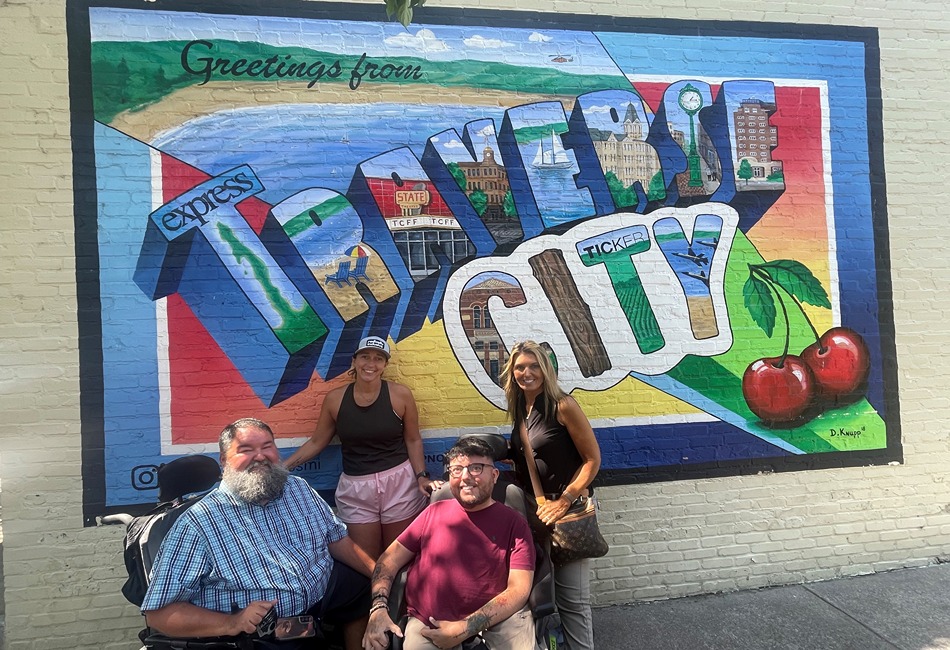
Which destinations or countries standout for their commitment to accessibility, and what can others learn from them?
Several destinations are leading the way in accessibility and inclusion, demonstrating how communities can proactively accommodate travelers with disabilities. Two standout cities in the U.S. that have gone above and beyond in supporting families with children on the autism spectrum are Mesa, Arizona, and Myrtle Beach, South Carolina. These destinations have implemented comprehensive accessibility initiatives by educating local businesses and adopting programs such as the Sunflower Lanyard, Autism Travel Club, IBCCES, AbleVu, and more. By offering sensory-friendly experiences, trained staff, and clear accessibility information, they create welcoming environments for neurodivergent travelers and their families.
When it comes to physical accessibility, there are many incredible destinations worldwide, but the best insights come from travelers with lived experience. Influencers like Curb Free with Cory Lee, Sylvia Longmire of Spin the Globe, and Kristy Durso are amazing resources for first-hand perspectives on wheelchair-accessible travel, adaptive experiences, and navigating different destinations.
What other destinations can learn from these leaders is that true accessibility goes beyond compliance—it’s about education, proactive adaptation, and inclusivity in every aspect of the travel experience. By partnering with accessibility experts, training businesses, and making information readily available, more cities and countries can open their doors to all travelers and benefit from the growing demand for inclusive tourism.
Have you encountered cultural differences in how disabilities are perceived around the world? How has that shaped your travel experiences?
I do not have firsthand experience traveling the world to explore accessibility—though I am excited to be visiting Germany next month on an accessibility-focused trip. What I do know comes from the firsthand experiences of incredible disability travel influencers such as Cory Lee (Curb Free with Cory Lee), Sylvia Longmire (Spin the Globe), and Kristy Durso, and many more who have shared invaluable insights on how different countries approach accessibility and inclusion.
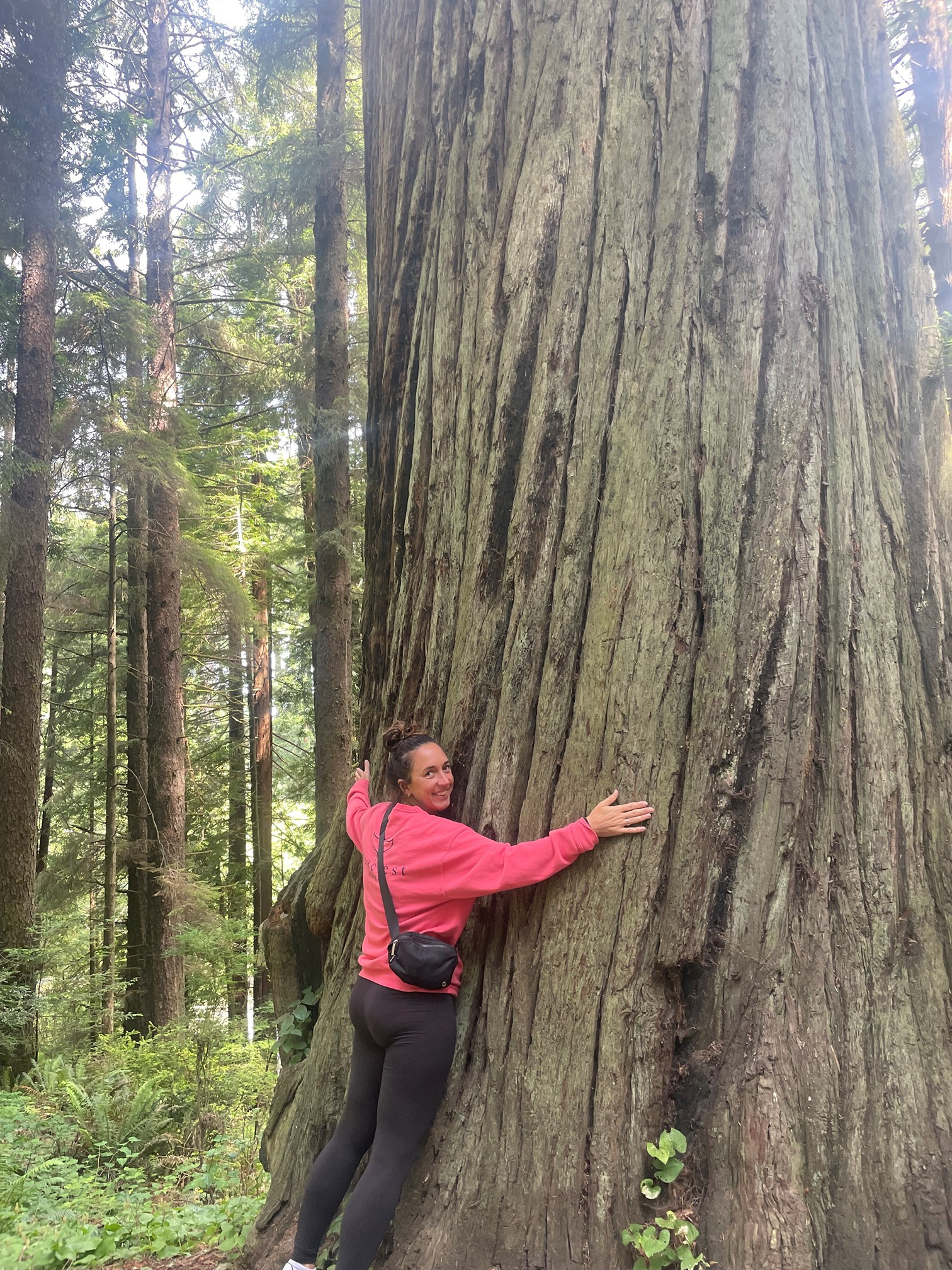
What recent innovations or technologies have significantly improved travel experiences for people with disabilities?
One of the most promising developments is the ongoing efforts to allow wheelchair users to remain in their own chairs during air travel. While this has not yet been fully approved, airlines and accessibility advocates are making significant progress in testing secure wheelchair restraint systems, which could revolutionize air travel for wheelchair users by providing both safety and dignity while flying.
Beyond air travel, technology-driven accessibility tools have made exploring the world more seamless and inclusive. Virtual tours and accessibility platforms like AbleVu help travelers preview destinations before they go, reducing uncertainty and allowing them to plan for accessibility needs in advance. Navigation apps with real-time accessibility data, such as Google Maps’ wheelchair-accessible routes and Aira’s live assistance for visually impaired travelers, have also enhanced independence while traveling.
Additionally, hotels and tourist attractions are integrating smart accessibility features, such as voice-activated room controls, adaptive communication devices, and sensory-friendly environments designed for neurodivergent travelers.
What gaps still exist in accessible tourism, and what improvements would you like to see in the next five to ten years?
One of the biggest barriers remains air travel, where wheelchair users are still required to transfer out of their chairs and into an airline seat—a process that can be uncomfortable, unsafe, and undignified. The industry is making strides in developing secure wheelchair restraint systems that would allow travelers to remain in their own chairs during flights, but this innovation has yet to be fully approved. In the next five to ten years, I would love to see this become a standard option across airlines.
Another major challenge is public transportation accessibility. While some cities have accessible options, finding clear, up-to-date information about those options is still difficult. Travelers should be able to easily search for wheelchair-accessible buses, subway stations, and ride services without digging through outdated or incomplete resources. Having a centralized accessibility database for public transportation worldwide would be a game-changer for independent travel.
Additionally, accessibility information needs to be standard on every business website. Too often, travelers with disabilities have to call ahead, search through reviews, or take a chance on whether a hotel, restaurant, or attraction meets their needs. In the future, I’d love to see businesses be proactive about sharing detailed accessibility information online, whether through virtual tours, accessibility checklists, or user-friendly descriptions.
How can travel brands—airlines, hotels, and tour operators—better support and market to travelers with disabilities?
Travel brands can better support and attract travelers with disabilities by prioritizing accessibility, providing clear and transparent information, and actively engaging with the disability community. One of the biggest barriers to accessible travel is the lack of information, which is why businesses should proactively share their accessibility features on their websites, booking platforms, and marketing materials. Travelers with disabilities shouldn’t have to call ahead or search endlessly for basic details—hotels, airlines, and tour operators should provide clear descriptions, virtual tours, and accessibility checklists to ensure an inclusive and stress-free experience.
For airlines, the biggest improvement would be allowing wheelchair users to stay in their own chairs during flights, a long-overdue innovation that is finally gaining traction. Additionally, airlines should improve staff training, ensuring employees understand how to properly assist travelers with mobility devices, sensory sensitivities, or medical equipment.
Hotels and tour operators should ensure that accessible rooms and experiences are easy to book online—not hidden behind phone-only reservations. They should also invest in staff training to provide exceptional service to guests with disabilities, covering topics like mobility accommodations, neurodiversity awareness, and communication best practices.
By focusing on accessibility, transparency, and representation, travel brands can not only serve this growing market but also build long-term loyalty with travelers who are eager to explore the world—if given the right opportunities.
Don’t miss out on the latest group travel trends. Download your free issue of Leisure Group Travel and stay informed on the best destinations, planning tips, and expert insights


